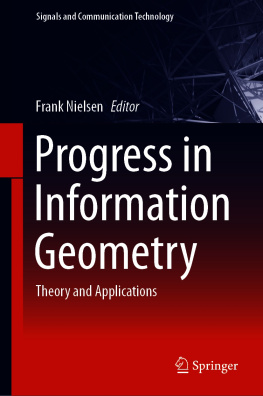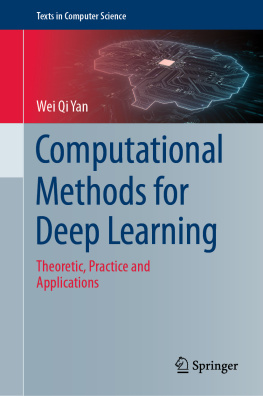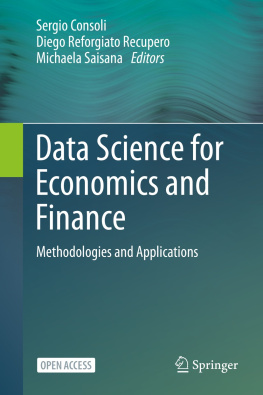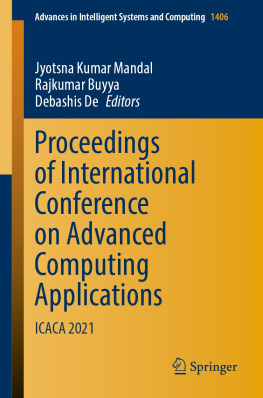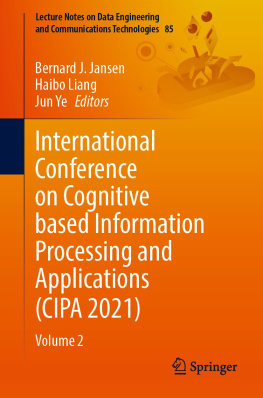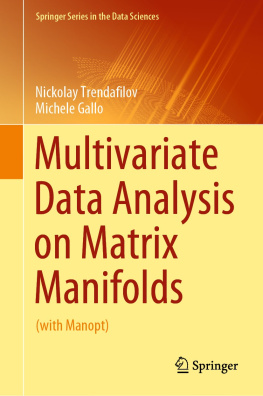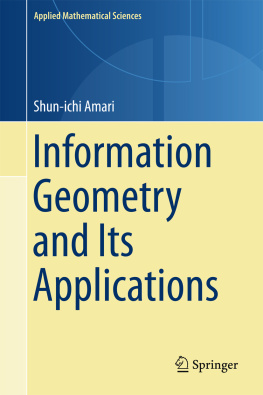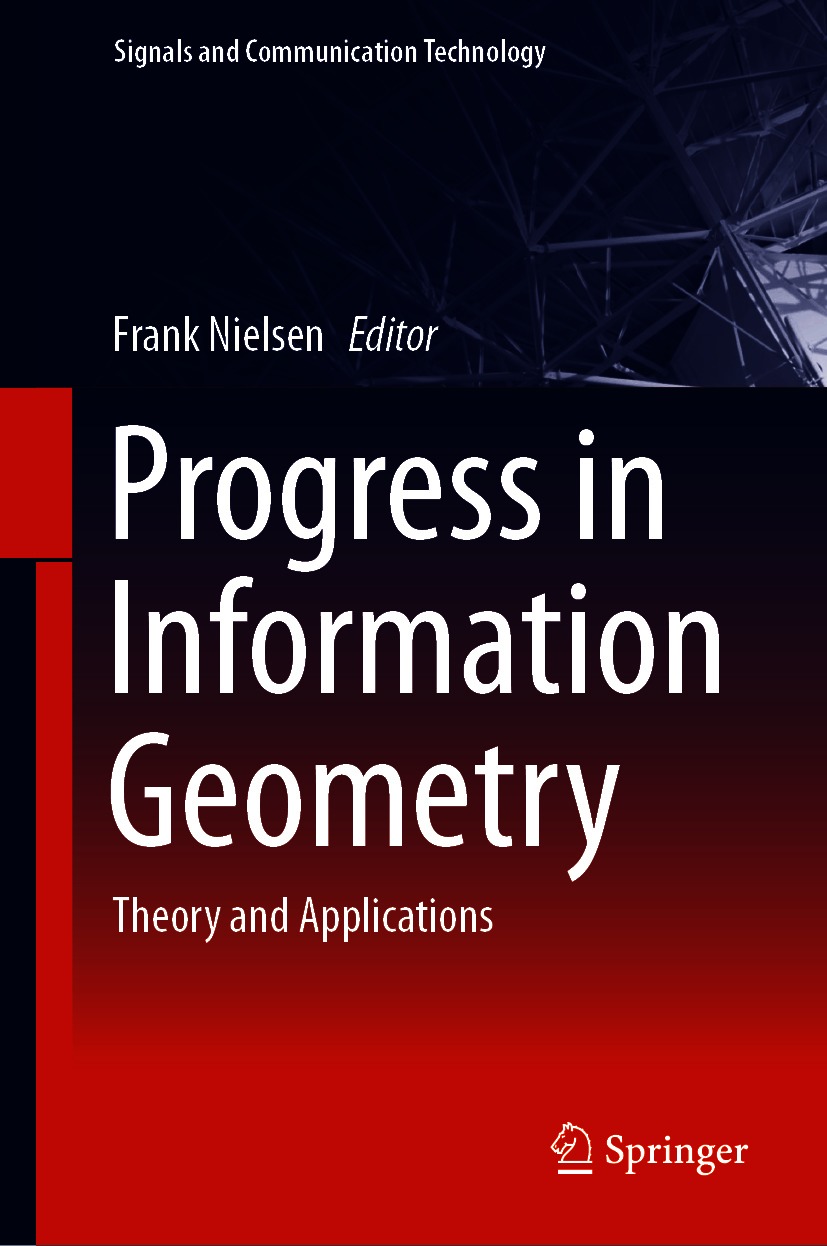Signals and Communication Technology
Series Editors
Emre Celebi
Department of Computer Science, University of Central Arkansas, Conway, AR, USA
Jingdong Chen
Northwestern Polytechnical University, Xian, China
E. S. Gopi
Department of Electronics and Communication Engineering, National Institute of Technology, Tiruchirappalli, Tamil Nadu, India
Amy Neustein
Linguistic Technology Systems, Fort Lee, NJ, USA
H. Vincent Poor
Department of Electrical Engineering, Princeton University, Princeton, NJ, USA
This series is devoted to fundamentals and applications of modern methods of signal processing and cutting-edge communication technologies. The main topics are information and signal theory, acoustical signal processing, image processing and multimedia systems, mobile and wireless communications, and computer and communication networks. Volumes in the series address researchers in academia and industrial R&D departments. The series is application-oriented. The level of presentation of each individual volume, however, depends on the subject and can range from practical to scientific.
**Indexing: All books in "Signals and Communication Technology" are indexed by Scopus and zbMATH**
For general information about this book series, comments or suggestions, please contact Mary James at mary.james@springer.com or Ramesh Nath Premnath at ramesh.premnath@springer.com.
More information about this series at http://www.springer.com/series/4748
Editor
Frank Nielsen
Sony Computer Science Laboratories, Inc., Tokyo, Japan
ISSN 1860-4862 e-ISSN 1860-4870
Signals and Communication Technology
ISBN 978-3-030-65458-0 e-ISBN 978-3-030-65459-7
https://doi.org/10.1007/978-3-030-65459-7
Springer Nature Switzerland AG 2021
This work is subject to copyright. All rights are reserved by the Publisher, whether the whole or part of the material is concerned, specifically the rights of translation, reprinting, reuse of illustrations, recitation, broadcasting, reproduction on microfilms or in any other physical way, and transmission or information storage and retrieval, electronic adaptation, computer software, or by similar or dissimilar methodology now known or hereafter developed.
The use of general descriptive names, registered names, trademarks, service marks, etc. in this publication does not imply, even in the absence of a specific statement, that such names are exempt from the relevant protective laws and regulations and therefore free for general use.
The publisher, the authors and the editors are safe to assume that the advice and information in this book are believed to be true and accurate at the date of publication. Neither the publisher nor the authors or the editors give a warranty, expressed or implied, with respect to the material contained herein or for any errors or omissions that may have been made. The publisher remains neutral with regard to jurisdictional claims in published maps and institutional affiliations.
This Springer imprint is published by the registered company Springer Nature Switzerland AG
The registered company address is: Gewerbestrasse 11, 6330 Cham, Switzerland
Preface
This edited book project entitled
Progress in Information Geometry: Theory and Applications (PIGTA) started in October 2019, right after the fourth biannual conference on the
Geometric Science of Information (GSI) which took place at the end of August 2019 in Toulouse (France). The proceedings of the fourth GSI were published by Springer in the LNCS series (volume 11712, https://www.springer.com/gp/book/9783030269791 ). The international conference was a nice opportunity to interact with colleagues willing to contribute to this book. In the past, let us quickly mention that we carried out similar projects after conference/workshop events as follows:
The book Matrix Information Geometry was published in 2013 after holding the Info-French workshop in 2011 on this theme ( https://www.springer.com/gp/book/9783642302312 ),
The book Geometric Theory of Information was published in 2014 after the First International Conference on Geometric Science of Information (GSI) held at cole des Mines (Paris, France) in August 2013.
The book Computational Information Geometry: For Image and Signal Processing was published in 2017 ( https://www.springer.com/gp/book/9783319470566 ) after the event held at the International Centre for Mathematical Sciences (ICMS, Edinburgh, UK) in September 2015.
The book Geometric Structures of Information was published ( https://www.springer.com/gp/book/9783030025199 ) in 2019 after the Third International Conference on Geometric Science of Information (GSI) held at cole des Mines ParisTech (Paris, France) in November 2017.
This book project was originally called Advances in Information Geometry (AIG) but we decided to rename it later to avoid confusion since the book title coincided with another planned international event scheduled to be held in Japan in March 2020 ( https://sites.google.com/view/aig2020/ ). However, the AIG conference event was unfortunately canceled due to the worldwide spread of the coronavirus (COVID-19).
Preparing this edited book during the pandemic was a different experience than in normal times: We had to allocate extra time for some contributors and reviewers, and to take into account personal situations to adapt the project. We are very grateful to the contributors and reviewers for their devoted times and efforts during this exceptional period, where most colleagues have to work remotely from home and had to quickly adapt to the evolving situation.
This edited book is organized into ten chapters, which are organized into two parts as follows: The first part deals with recent advances on the fundamentals of information geometry and the second part explores connections or potential interactions of information geometry with other domains (e.g., time-series analysis or optimal transport).
The first part on the fundamentals of information geometry is structured as follows:
Professor Pistone further explores non-parametric information geometry in the chapter entitled .
Professors de Andrade, Vieira, and Cavalcante report the latest results in deformed exponential families in the chapter entitled .
Professors Zhang and Khan investigate affine connections with torsions in the chapter entitled .
Professors Goto and Hino study the master equations and expectation variables of the moment dynamical system derived from the master equations using para-contact metric manifolds in the chapter entitled .
Professor Barbaresco considers homogeneous bounded domains and invariant Koszul form and its relationship with information geometry in the chapter entitled .
Professors Matsuzoe and Takatsu study gauge freedom in the chapter entitled .

